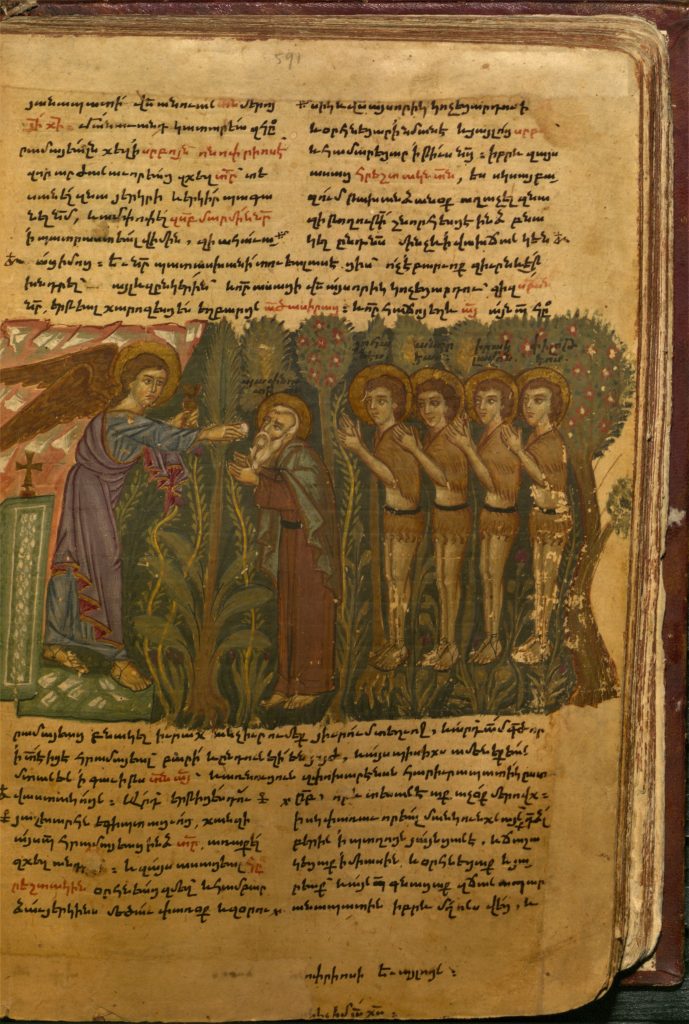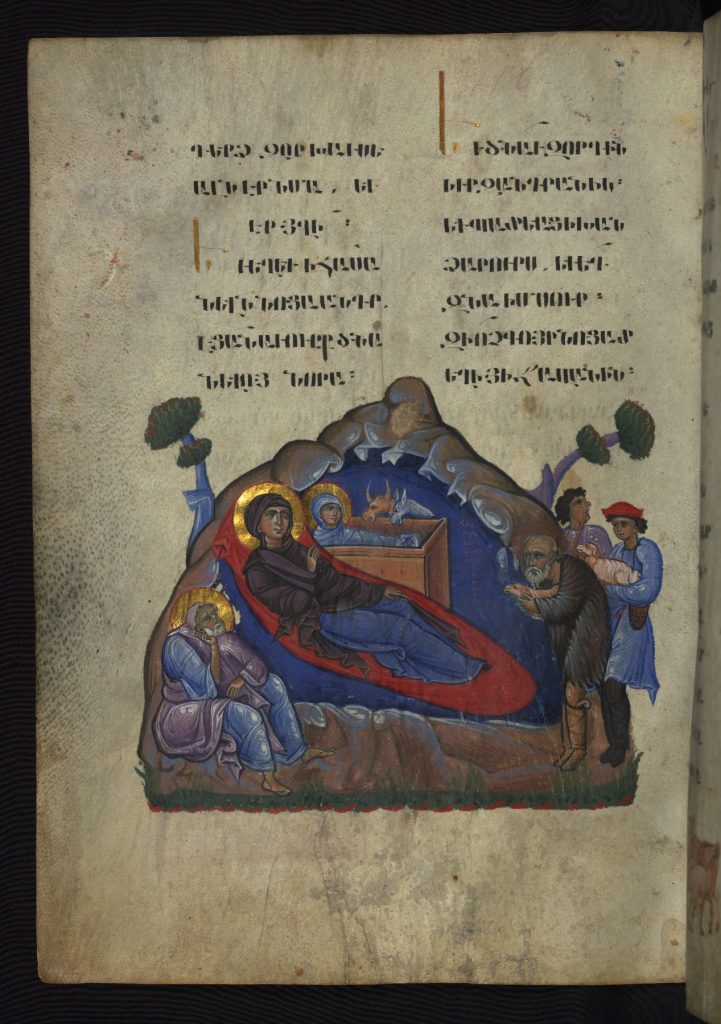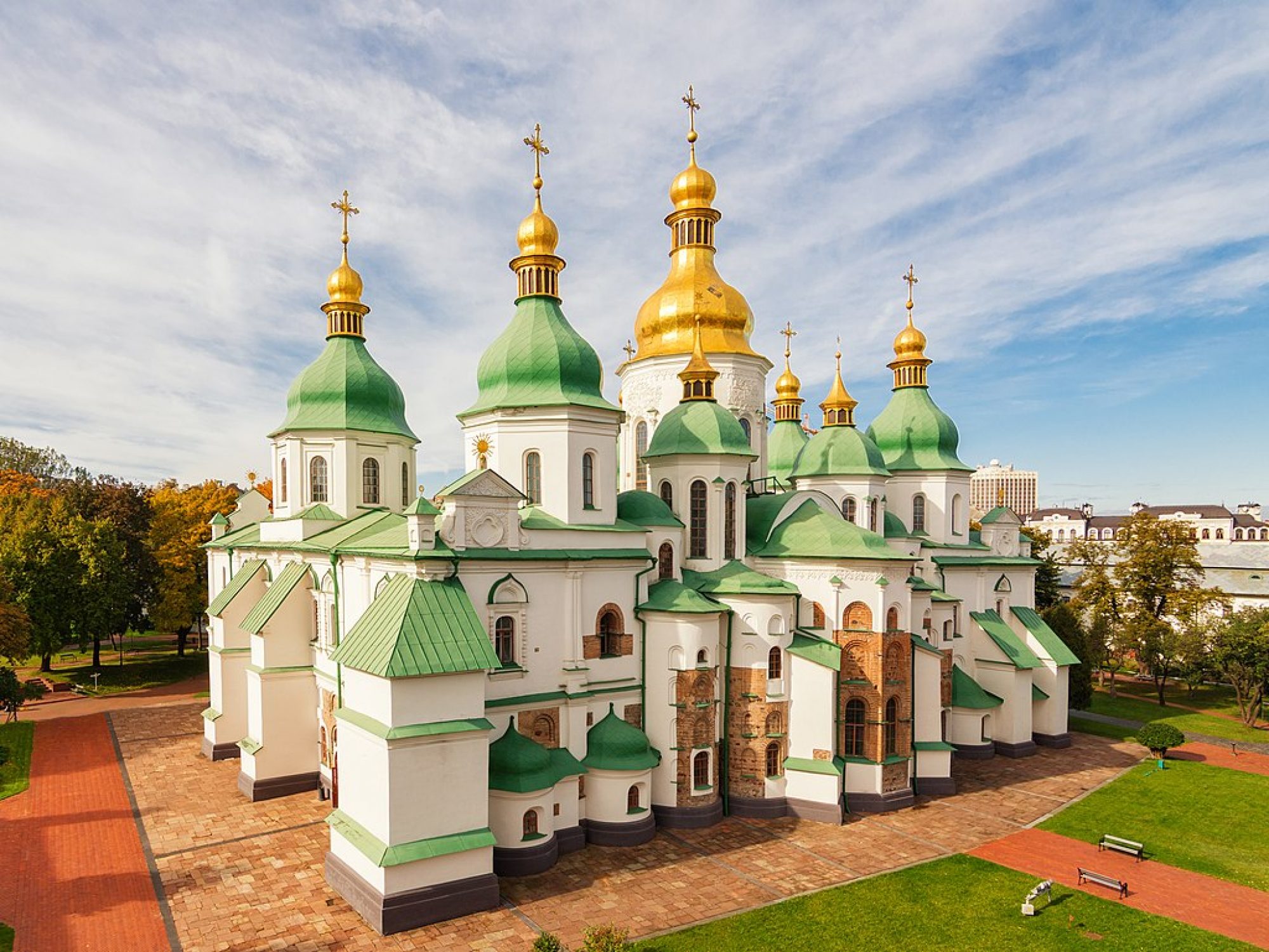Crimea flourished in the fourteenth and fifteenth centuries as an important nexus for trade and commerce, connecting the eastern Mediterranean with the Black Sea basin. It was populated by diverse communities of merchants, mercenaries, and artisans hailing from places as far as Venice, Genoa, Russia, Greece, and Armenia. The intersection of cultures in the peninsula allowed for cultural exchange between the various artistic traditions of the inhabitants.
One example is manuscript no. 285 of the Library of the Armenian Patriarchate in Jerusalem, commonly known as the Kaffa Manuscript of the Lives of the Desert Fathers of Egypt. According to the manuscript’s colophon (a brief statement of a book’s circumstance), it was written and illuminated in 1430 under the purview of monk Thaddeus Avraments` at the Monastery of St. Anthony in Kaffa in Crimea (now Feodosia, Crimea, Ukraine).

The creation of a manuscript was a costly undertaking in the Middle Ages, requiring expensive materials such as parchment, pigments, dyes, and precious metals. These materials then had to be transformed by scribes and artisans – often monks themselves – into works with sacred and liturgical meaning. The knowledge that religious communities committed to these holy manuscripts is a testament to their utmost importance as works of religious art. These works were imbued with consecrated knowledge designed to inspire and facilitate the faithful on their spiritual paths.
The Kaffa Manuscript is important for multiple reasons. It is the oldest existing illuminated Armenian manuscript of the Lives of the Desert Fathers of Egypt – a travelog and hagiography (a biography relating to saints and holy figures). It is also one of the finest, earliest examples of a composite “Armeno-Crimean” art style combining the illustrative techniques of the Byzantine and Cilician Armenian traditions.

Scholars also believe that the use of color, specifically white, in representing negative space, is an indication of the growing transmission of hesychastic beliefs among monastic communities throughout the Eastern Mediterranean and Black Sea. More recent research has taken an iconographical and phenomenological approach in considering the use of red and gold as catalysts to provoke sensory responses in the reader. Indeed, the Kaffa Manuscript is a remarkable paragon for those wishing to study Byzantine and Armenian visual culture and image theory.
